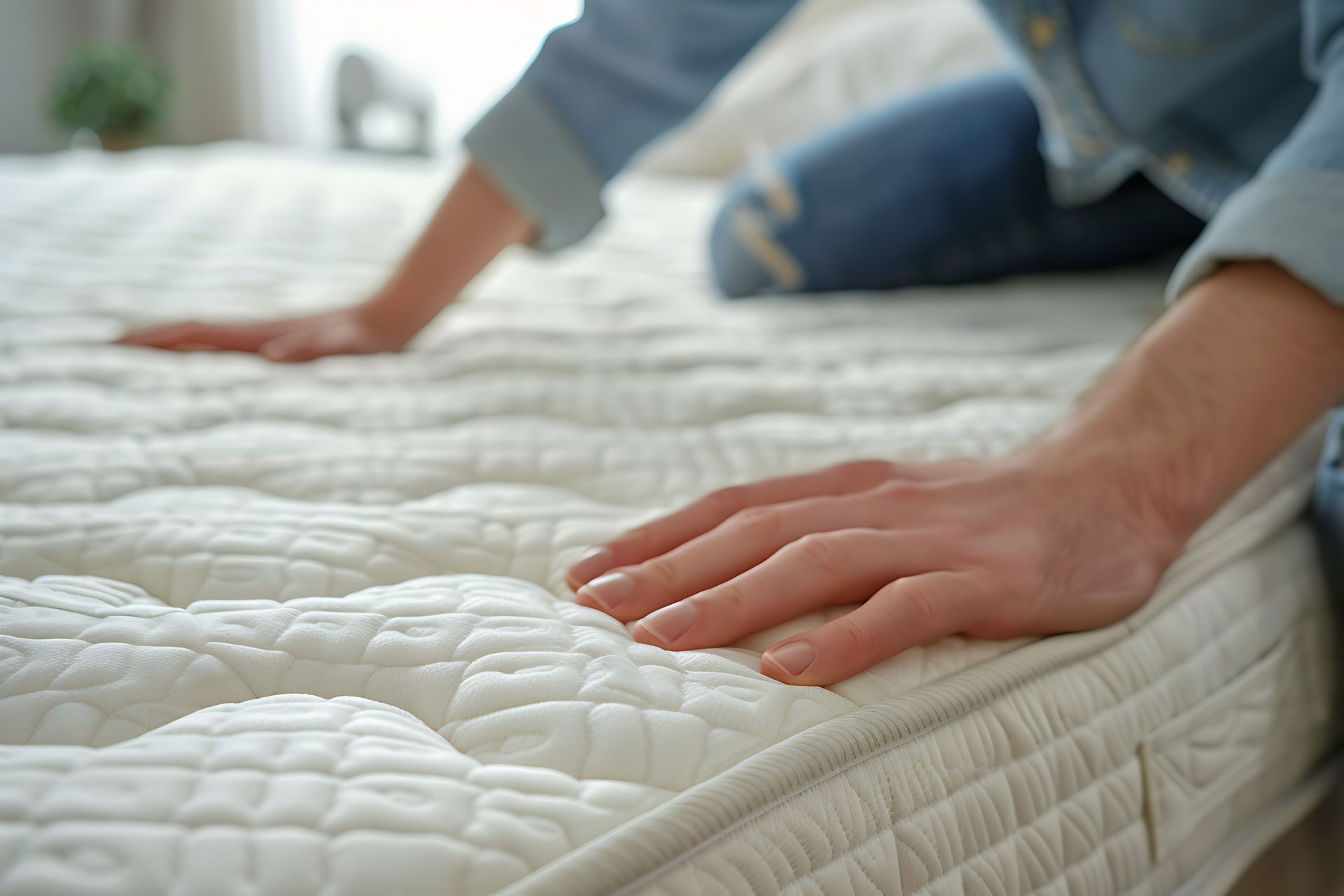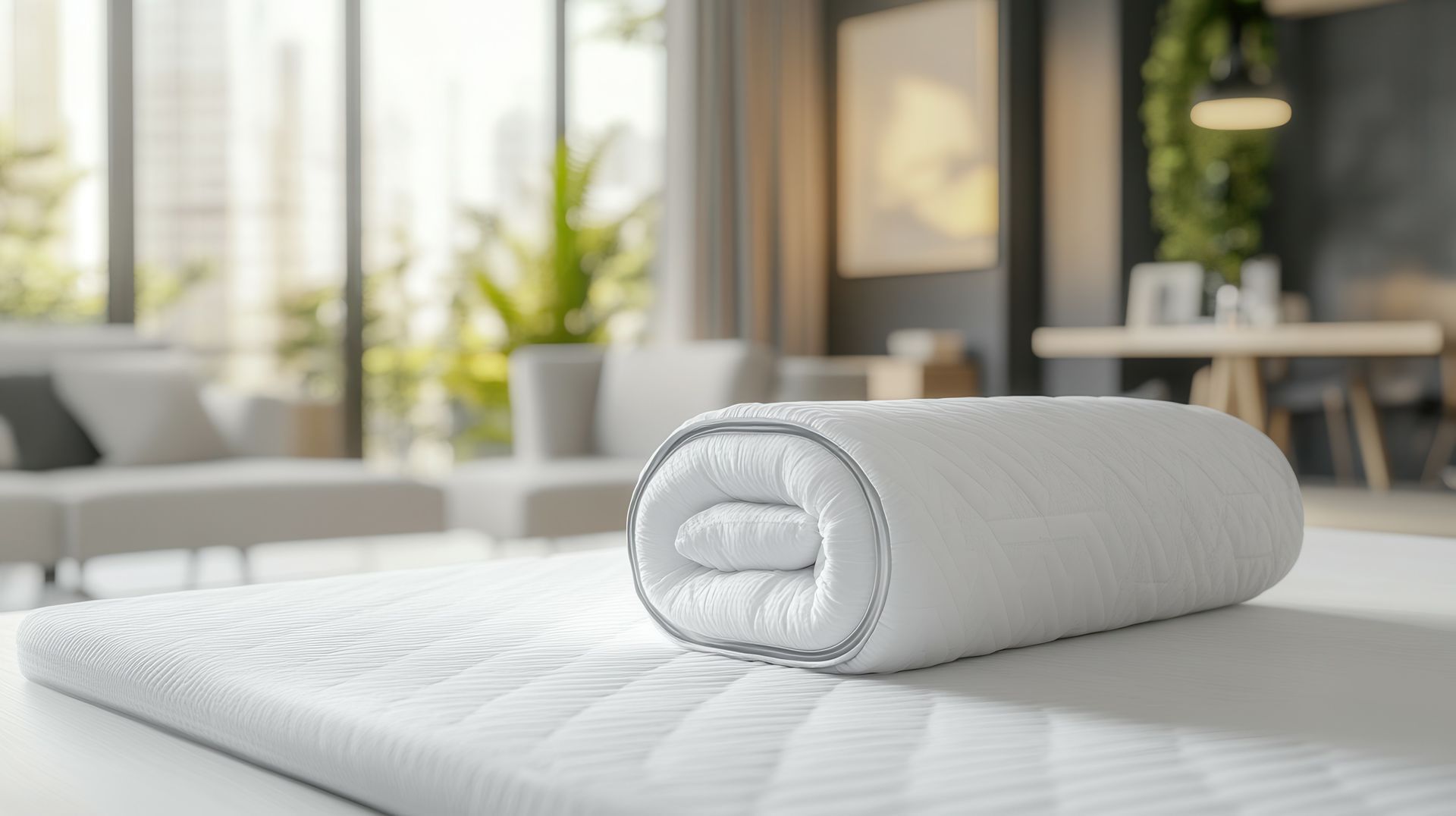Get a KING for the price of a QUEEN and a QUEEN for the price of a FULL! | Shop Now!

As the days get shorter and colder, many people start to feel the effects of Seasonal Affective Disorder (SAD). SAD is a type of depression triggered by changes in seasons, typically beginning in late fall and continuing through winter. Symptoms can include fatigue, difficulty concentrating, irritability and intense feelings of sadness or hopelessness.
While various treatment options exist, one effective way to manage SAD is through quality sleep. Prioritizing restful sleep can boost mood, increase energy levels and help you better cope with the mental and emotional challenges SAD brings.
The Connection Between Sleep and SAD
One of the main factors contributing to SAD is the reduced sunlight during the fall and winter months, which can disrupt your body’s internal clock, or circadian rhythm. Sunlight is essential in regulating serotonin, a neurotransmitter linked to mood, and melatonin, the hormone that controls sleep. With less exposure to natural light, your body may produce lower levels of serotonin and increased levels of melatonin, resulting in fatigue and mood changes. Sleep becomes especially important because restful, consistent sleep supports balanced hormone levels, which can ease symptoms of SAD.
Good sleep also helps manage cortisol levels, the body’s stress hormone, which tends to spike during periods of depression or stress. Consistent, high-quality sleep can help regulate cortisol, leaving you more energized and balanced.
Sleep Hygiene Tips for Managing SAD
If you’re experiencing symptoms of SAD, developing a sleep-friendly routine can be crucial for your well-being.
Here are some tips to help you maintain good sleep hygiene, especially during the fall and winter.
Stick to a Consistent Sleep Schedule
Maintaining a regular sleep schedule helps regulate your body’s internal clock, making it easier to fall asleep and wake up at the same time every day. Even on weekends, try to avoid drastically changing your sleep or wake times. Consistency is key to helping your body adjust to seasonal changes and ensuring you get adequate rest every night.
Maximize Natural Light Exposure
While it may be tempting to stay indoors on cold, gloomy days, spending time outside can make a huge difference. Natural sunlight helps increase serotonin levels, which can improve mood and energy. Try to spend at least 30 minutes outside each day, especially in the morning when sunlight exposure is most beneficial for regulating your body clock. If natural light is limited, consider using a light therapy box—a device that mimics natural sunlight and can effectively reduce symptoms of SAD when used regularly.
Create a Relaxing Evening Routine
A calming pre-sleep routine can signal your body that it’s time to unwind and prepare for rest. Try activities such as reading, stretching, meditating or practicing gentle breathing exercises. Avoid screens, as blue light emitted by phones, computers and TVs can interfere with melatonin production, making it harder for you to fall asleep. Instead, opt for calming, screen-free activities in the hour leading up to bedtime.
Keep Your Bedroom Cool and Comfortable
A dark, cool and quiet bedroom environment can make it easier for you to fall asleep and stay asleep. Darkness signals your body to release melatonin, while a cool temperature can help regulate your body heat, making it easier to achieve deep, restful sleep. Block out as much light as possible with blackout curtains or an eye mask, and consider using earplugs or a white noise machine if silence is hard to achieve due to road noise or activity in your household.
Watch Your Diet and Caffeine Intake
What you eat and drink can significantly impact your sleep quality. Try to avoid caffeine and heavy meals later in the day, as they can lead to restlessness and disrupt your sleep cycle. Instead, opt for lighter meals in the evening and consider snacks rich in tryptophan, magnesium or calcium. These nutrients promote relaxation and can improve sleep quality. Chamomile tea or a warm glass of milk can be soothing options to include in your evening routine.
Incorporate Physical Activity
Exercise is a natural mood booster and can be especially helpful in managing symptoms of SAD. Physical activity increases serotonin production, improving both your mood and energy levels. However, it’s best to avoid vigorous exercise right before bed, as this can have a stimulating effect. Try to fit in moderate exercise earlier in the day to maximize its benefits for your sleep and mental health.
Limit Naps and Shorten Nap Length
During the winter months, it’s common to feel more fatigued throughout the day. However, taking long naps can disrupt your sleep schedule, making it harder to get quality rest at night. If you need to nap, limit it to 20-30 minutes in the early afternoon to avoid interfering with your nighttime sleep.
When to Seek Help
If improving your sleep doesn’t seem to alleviate your symptoms, or if you continue to experience severe fatigue, sadness or lack of motivation, it may be time to seek professional help. Healthcare providers can offer a variety of treatments, including light therapy, medication or cognitive-behavioral therapy specifically designed to alleviate SAD symptoms. These treatments can be particularly beneficial when combined with consistent, high-quality sleep.
Prioritize Restful Sleep With Our Mattresses in Spokane, WA
Don’t let poor sleep affect your mood and energy—our mattresses are designed to help you wake up refreshed, energized and ready to take on the day.
Call our North Spokane Showroom at (509) 413-2431, our Spokane Valley Showroom at (509) 926-2333, or visit either of our locations today and invest in the best sleep of your life.
Our Mattresses
Our Locations
North Spokane Showroom
12519 N Division St, Suite 4
Spokane, WA 99218
(509) 413-2431
Map & Directions
Business Hours
- Mon - Fri
- -
- Saturday
- -
- Sunday
- Closed






